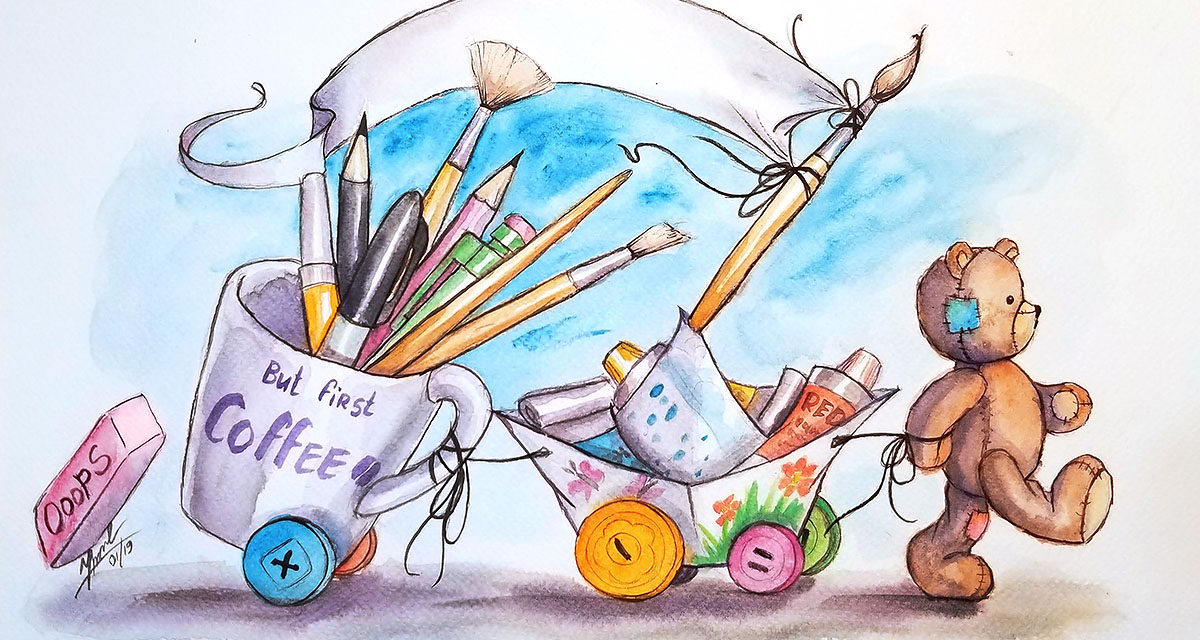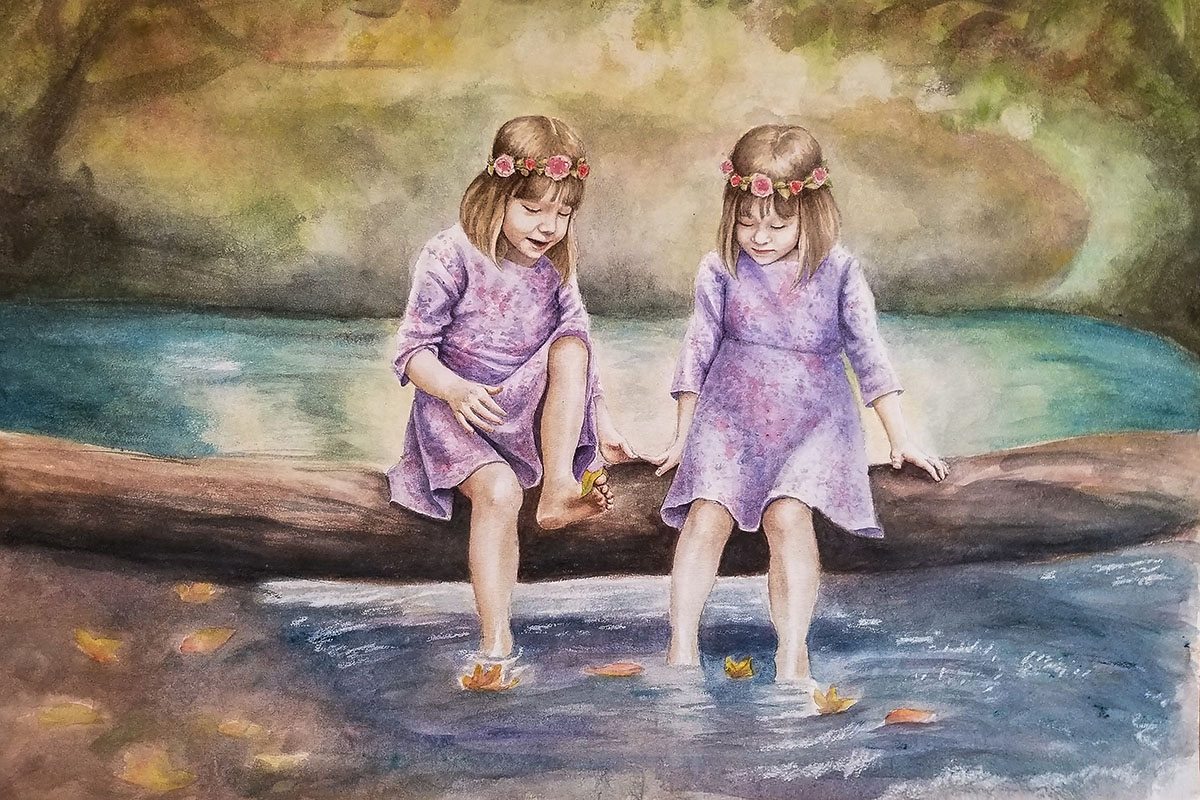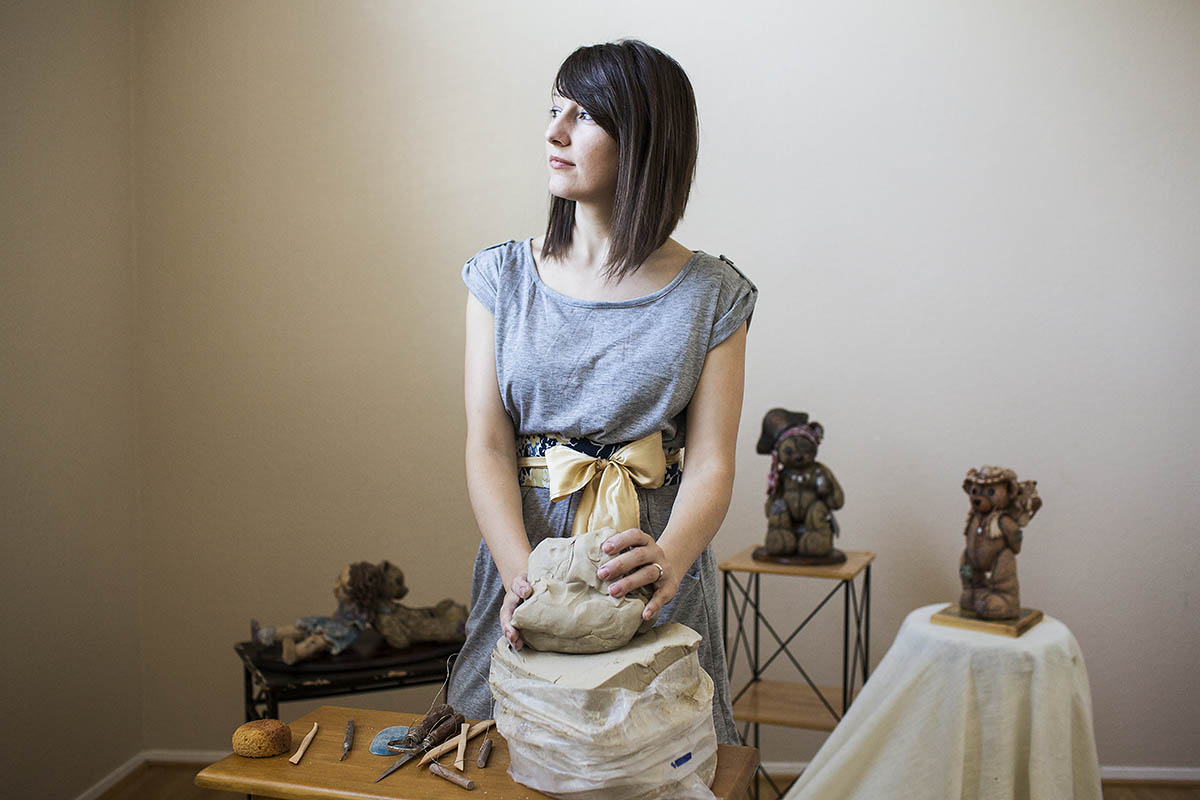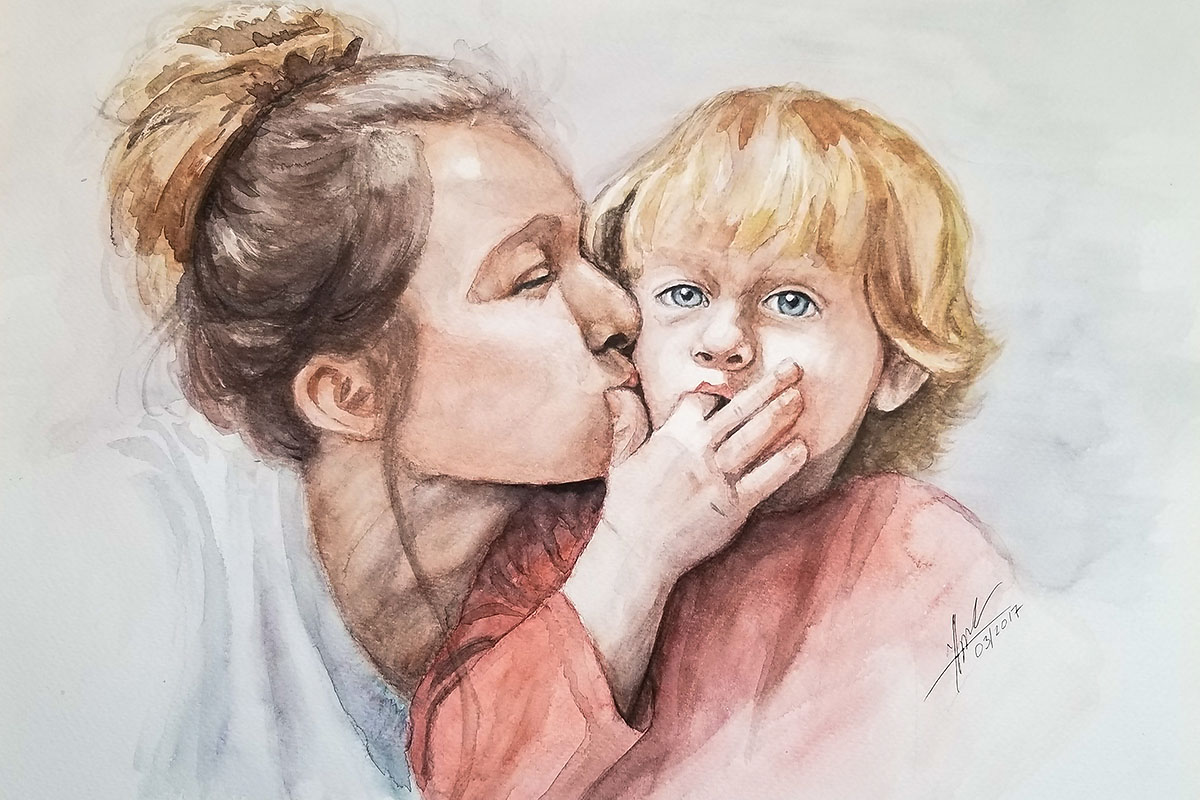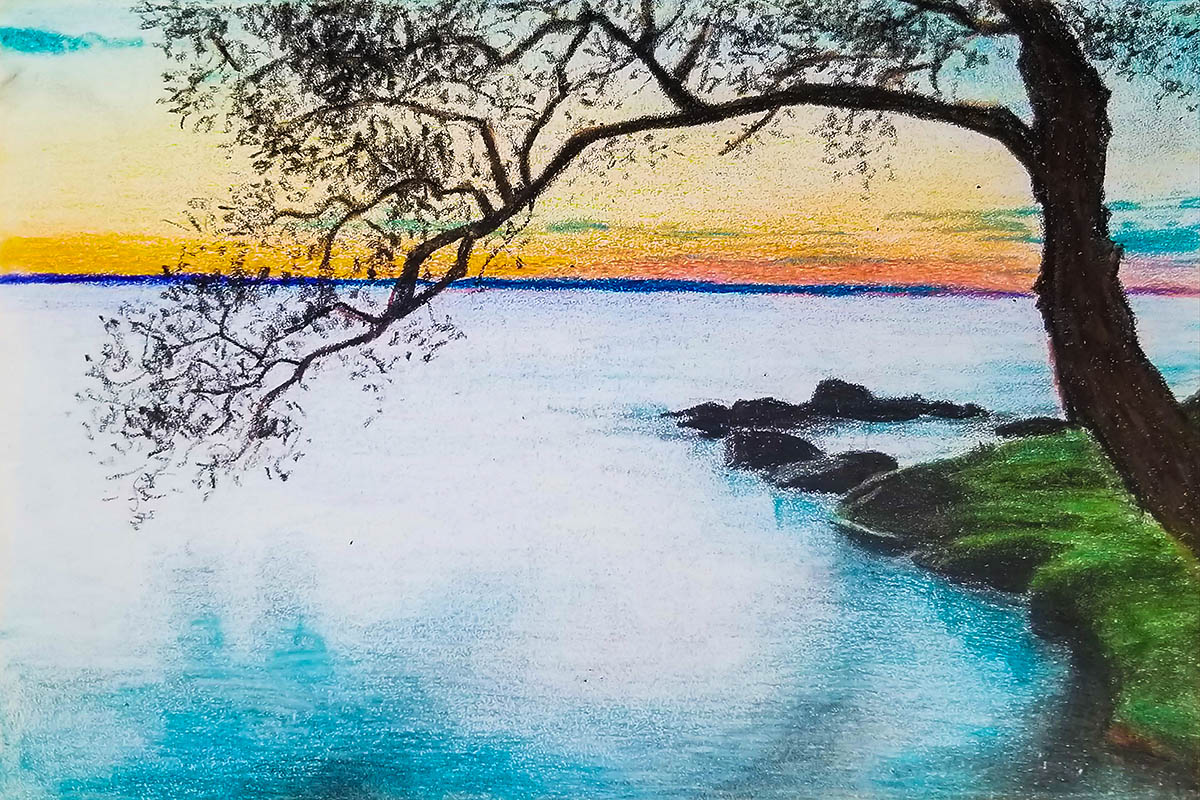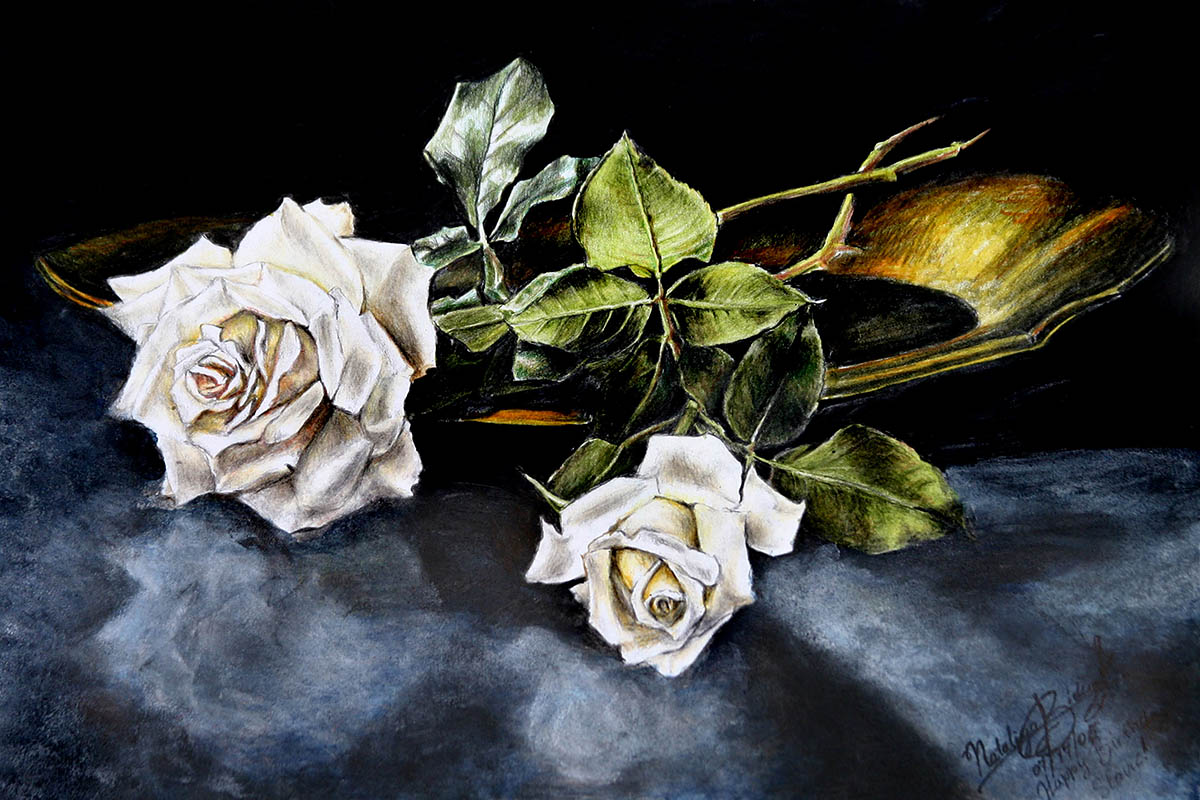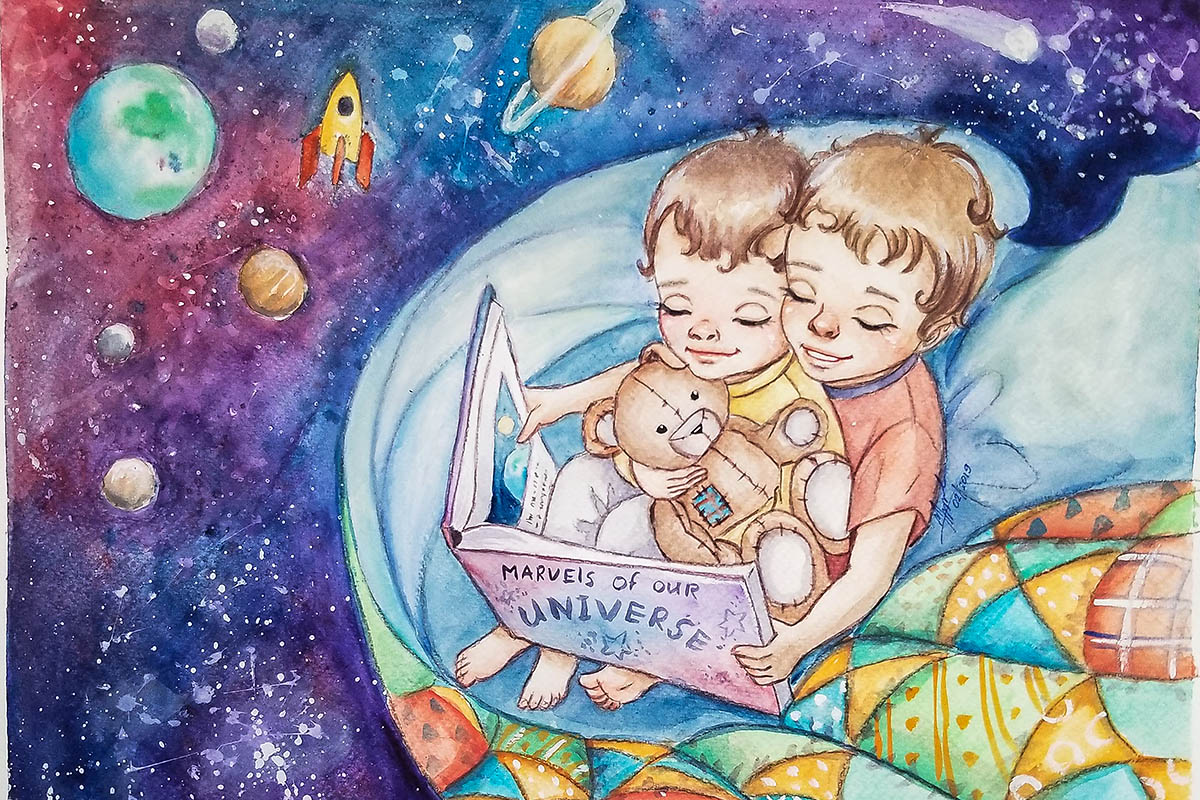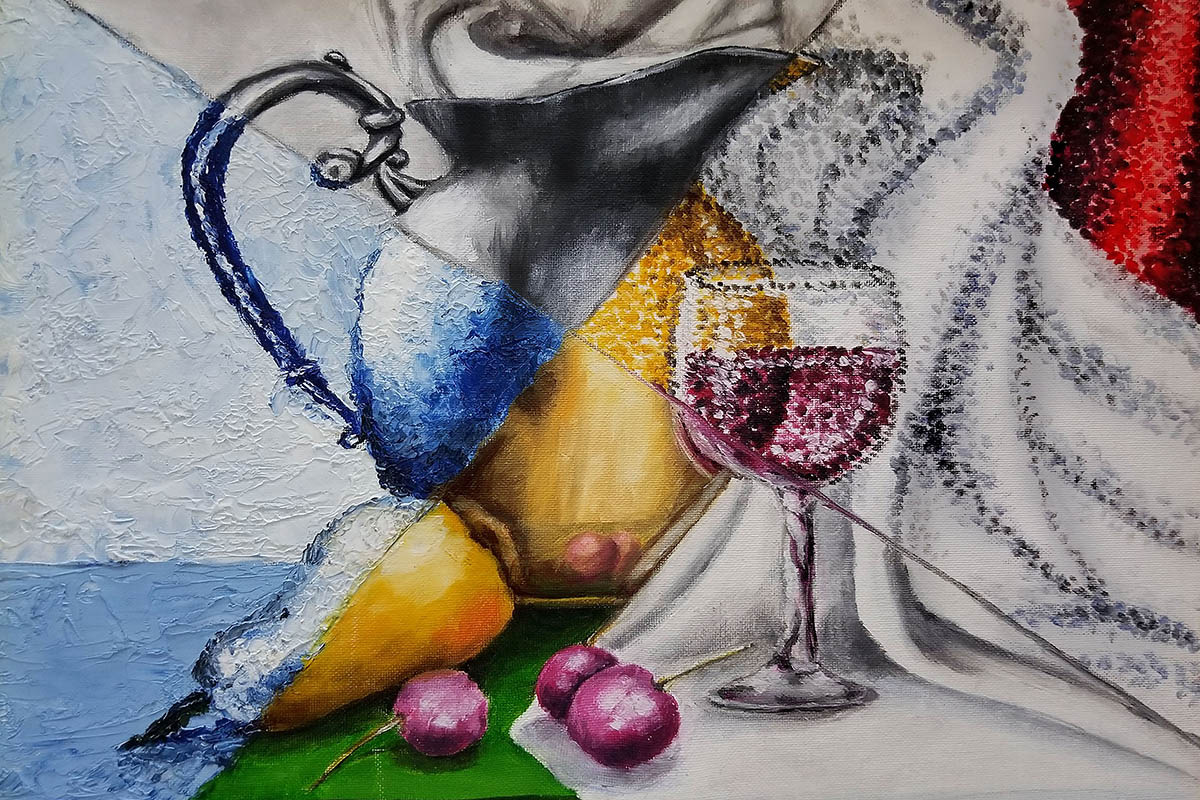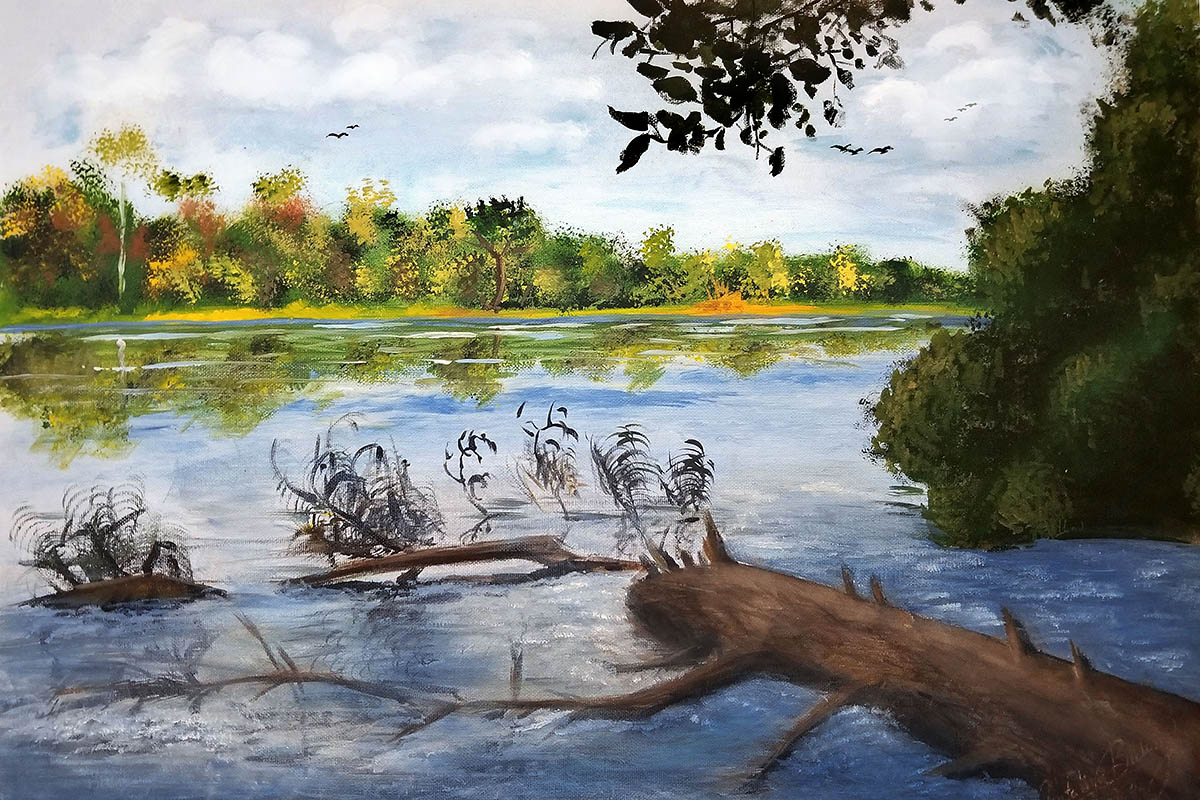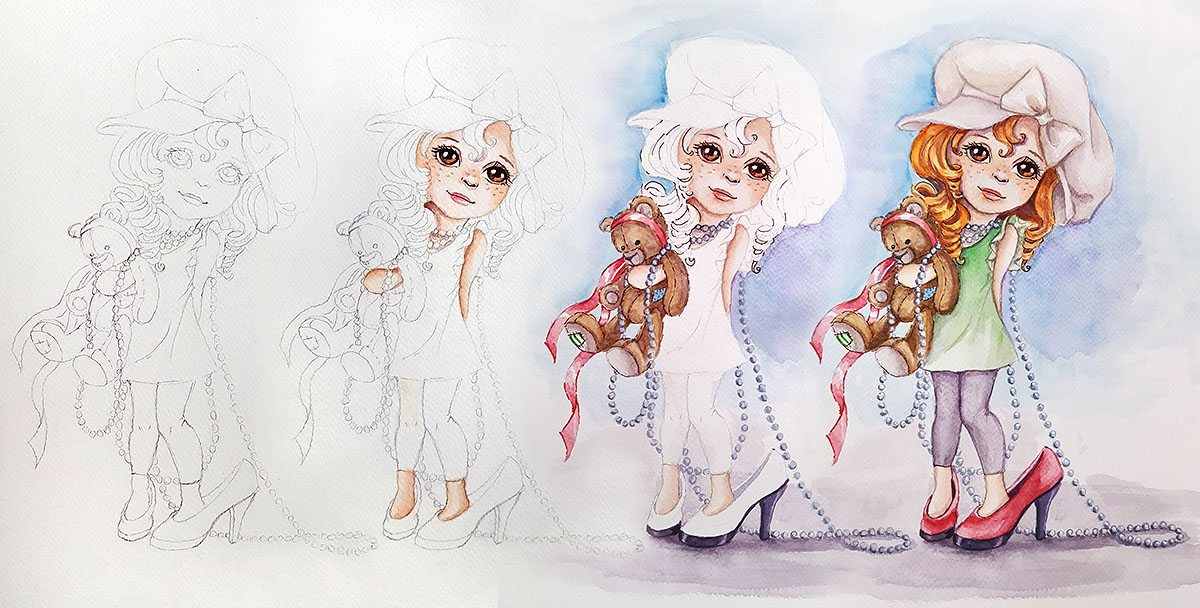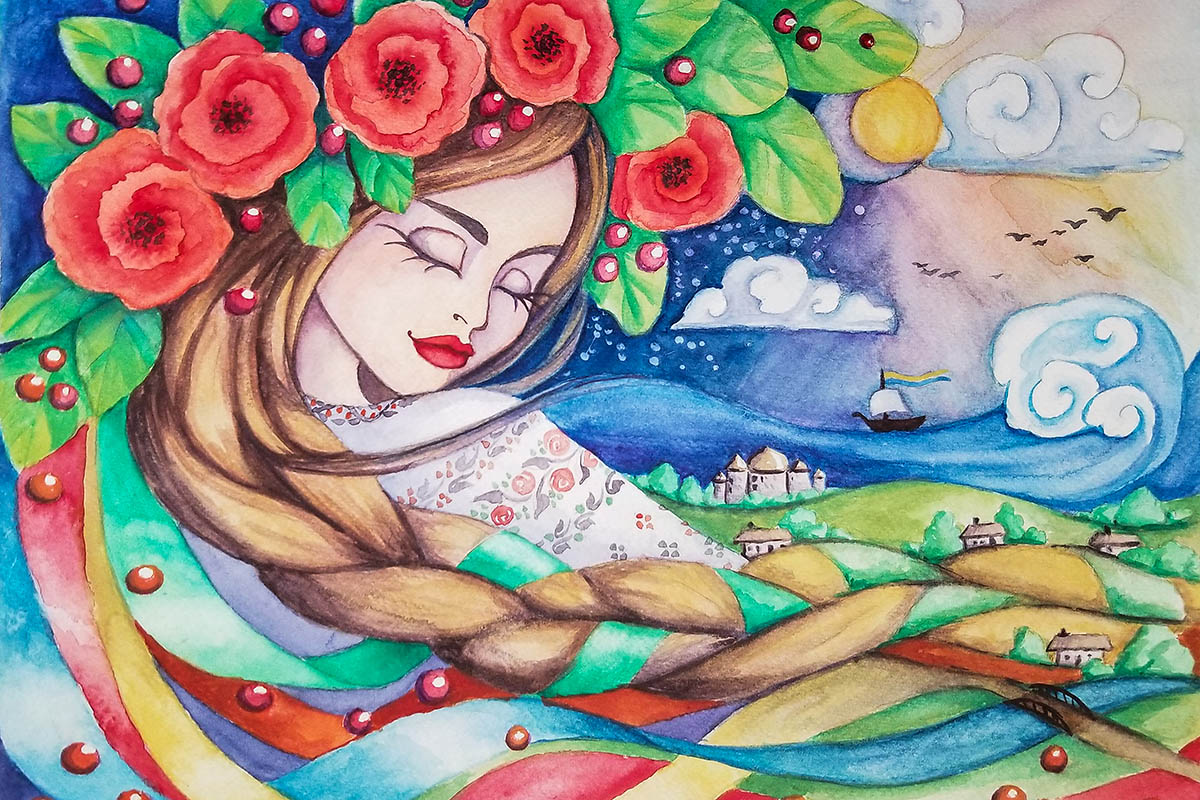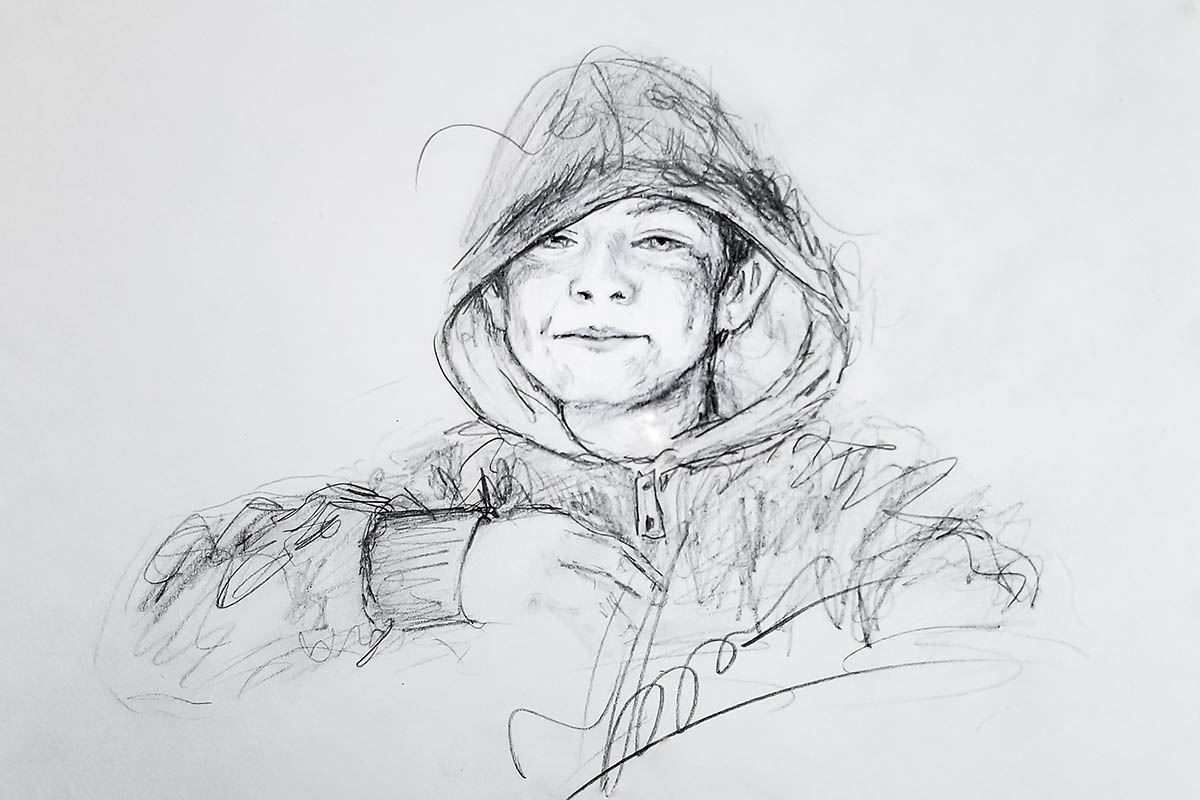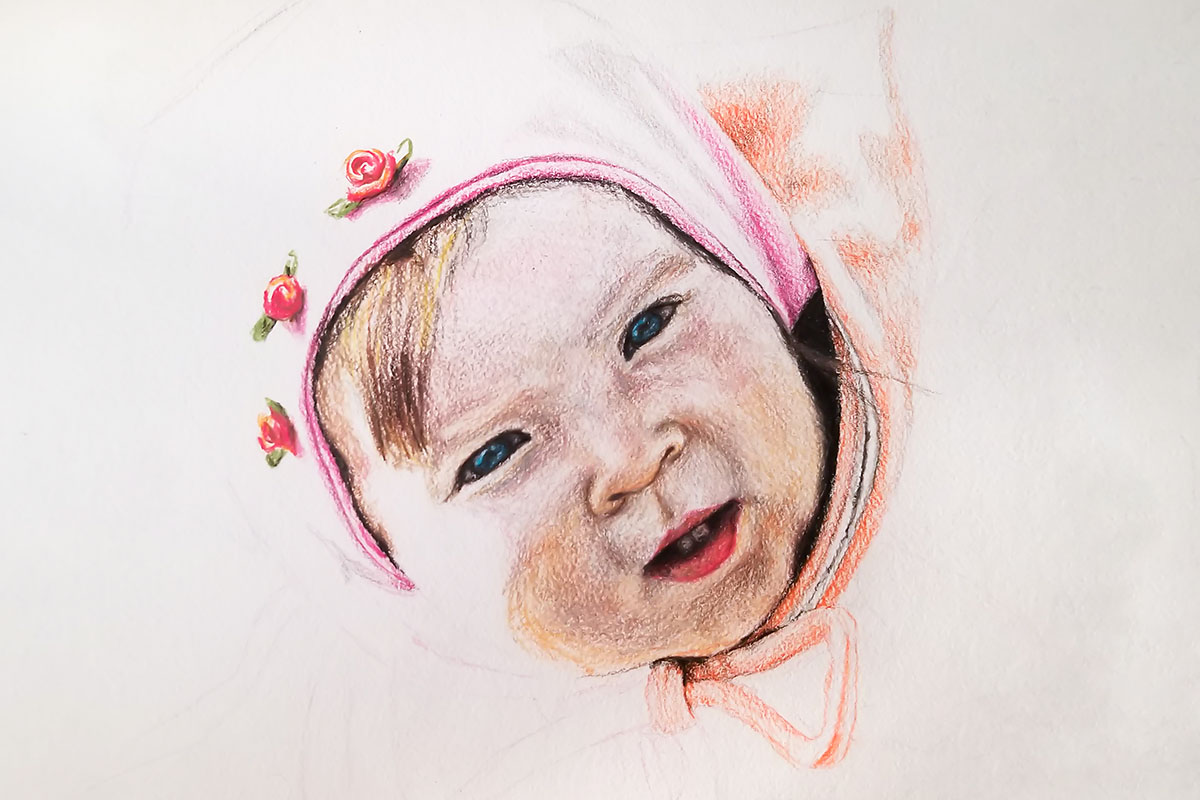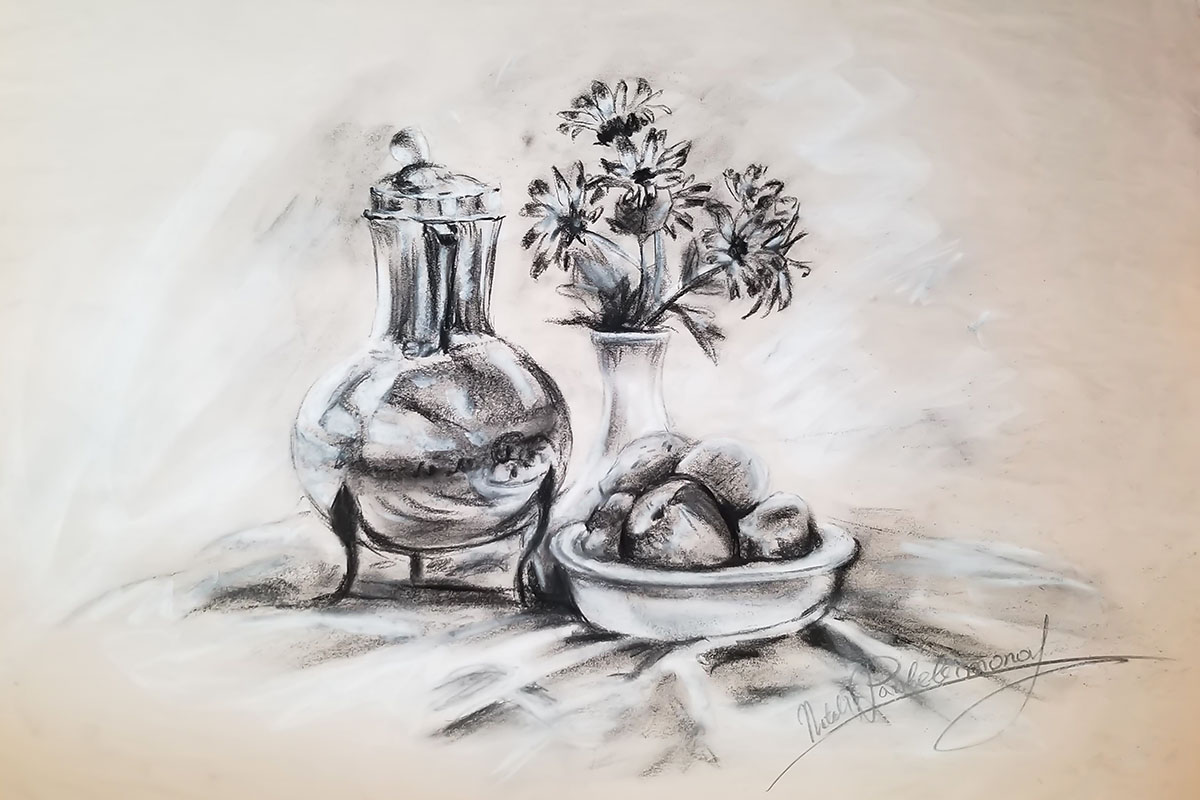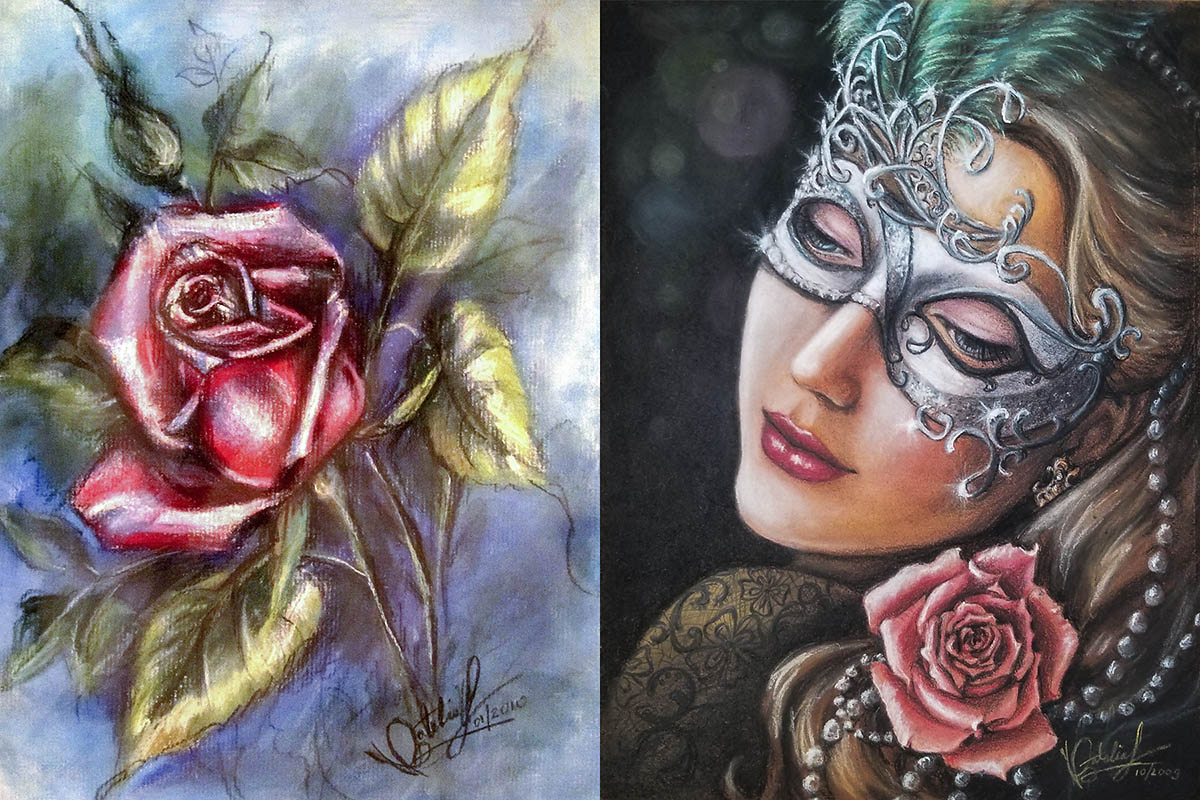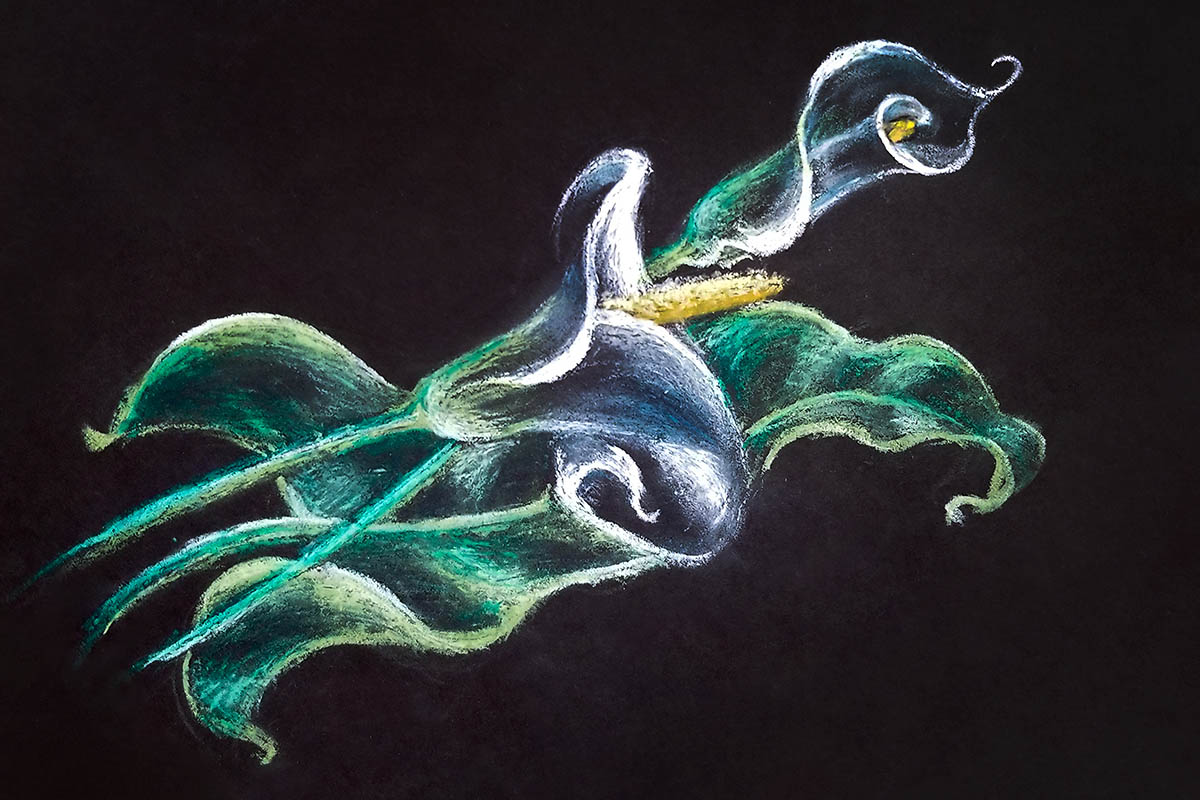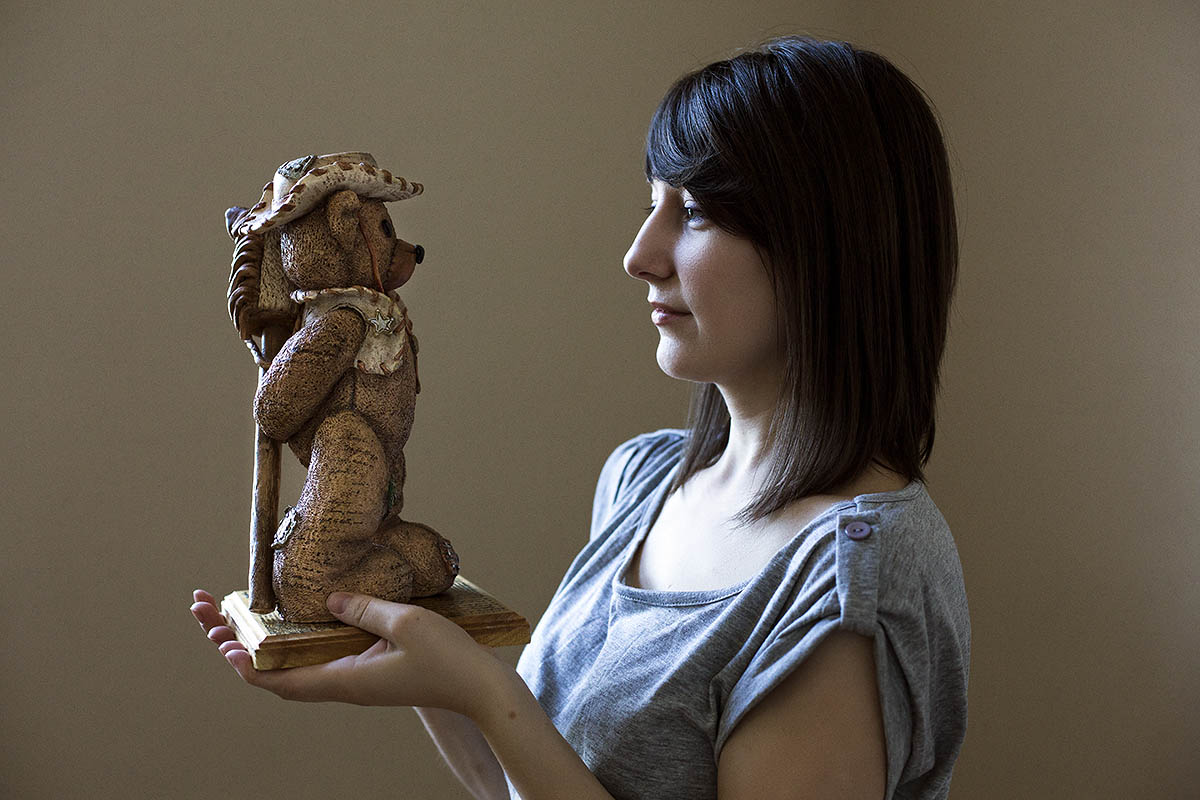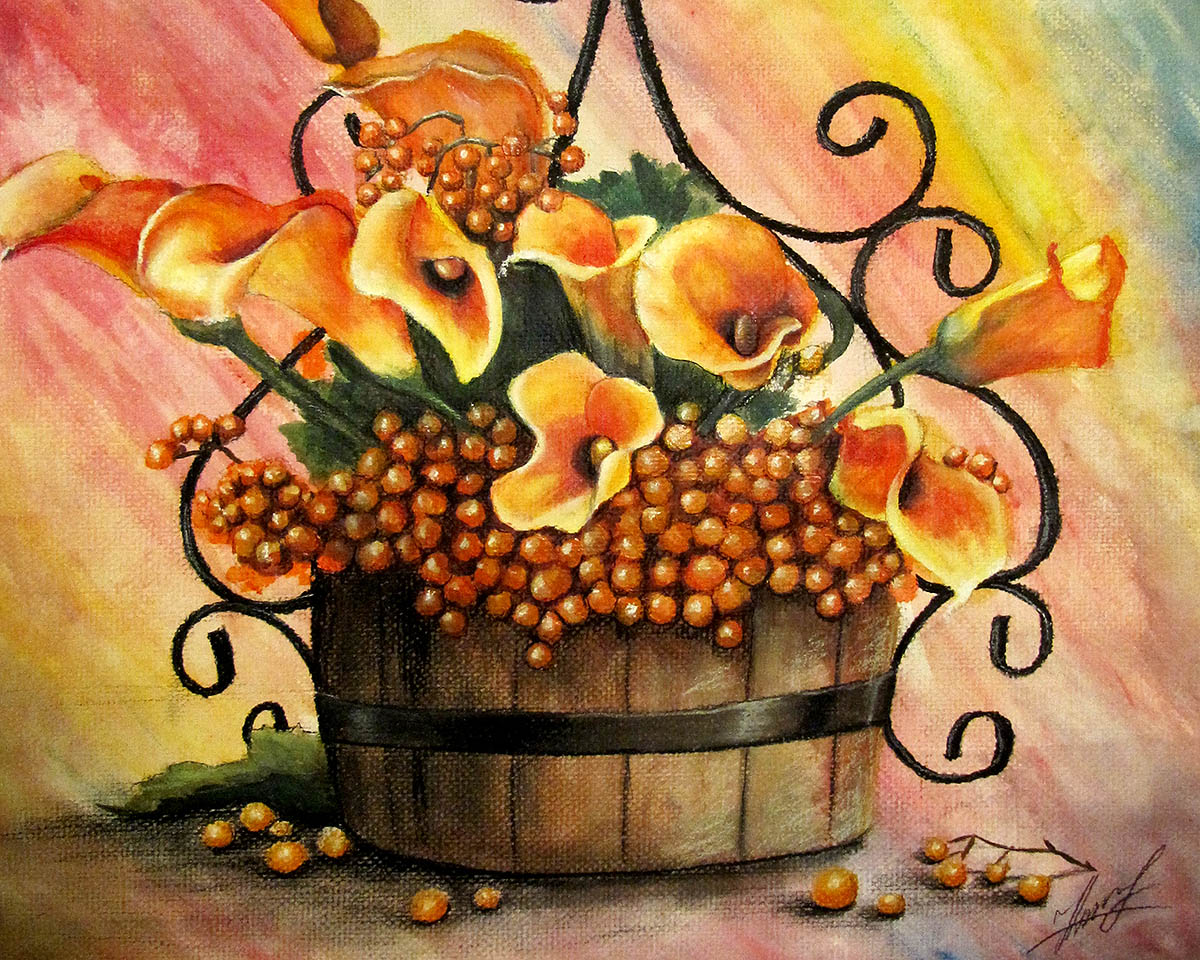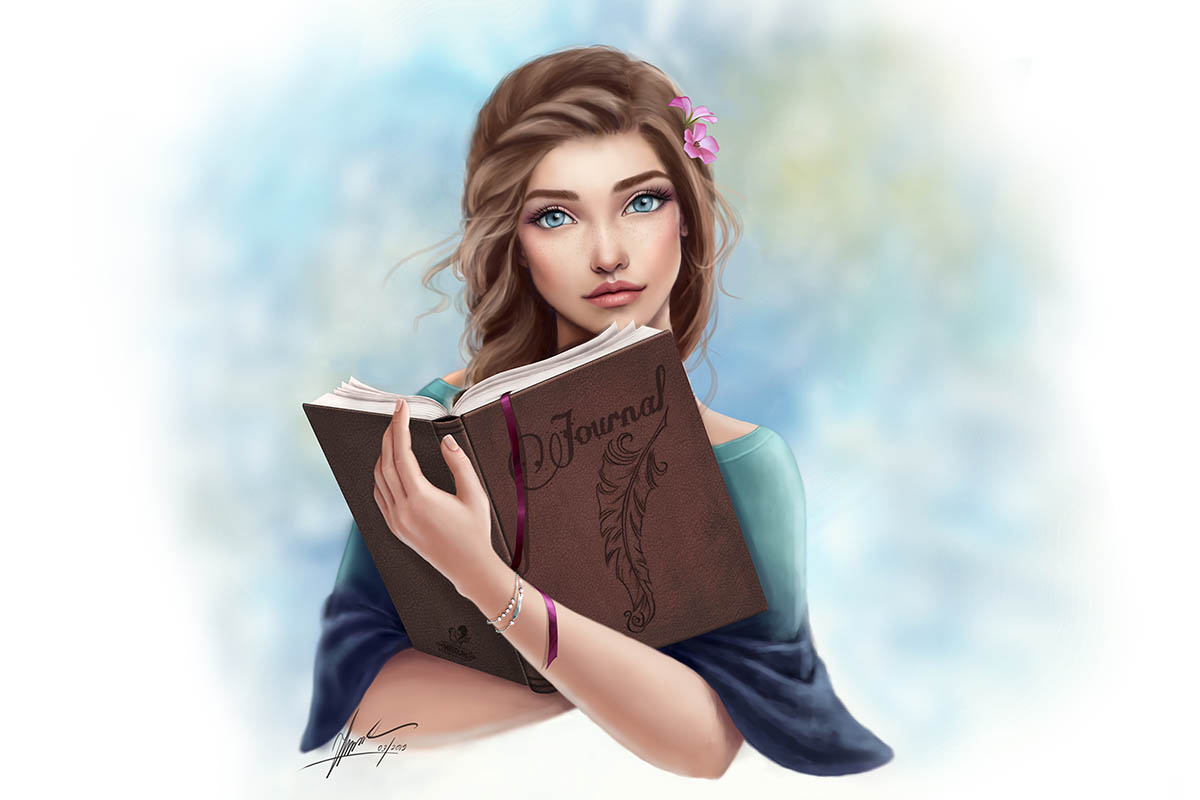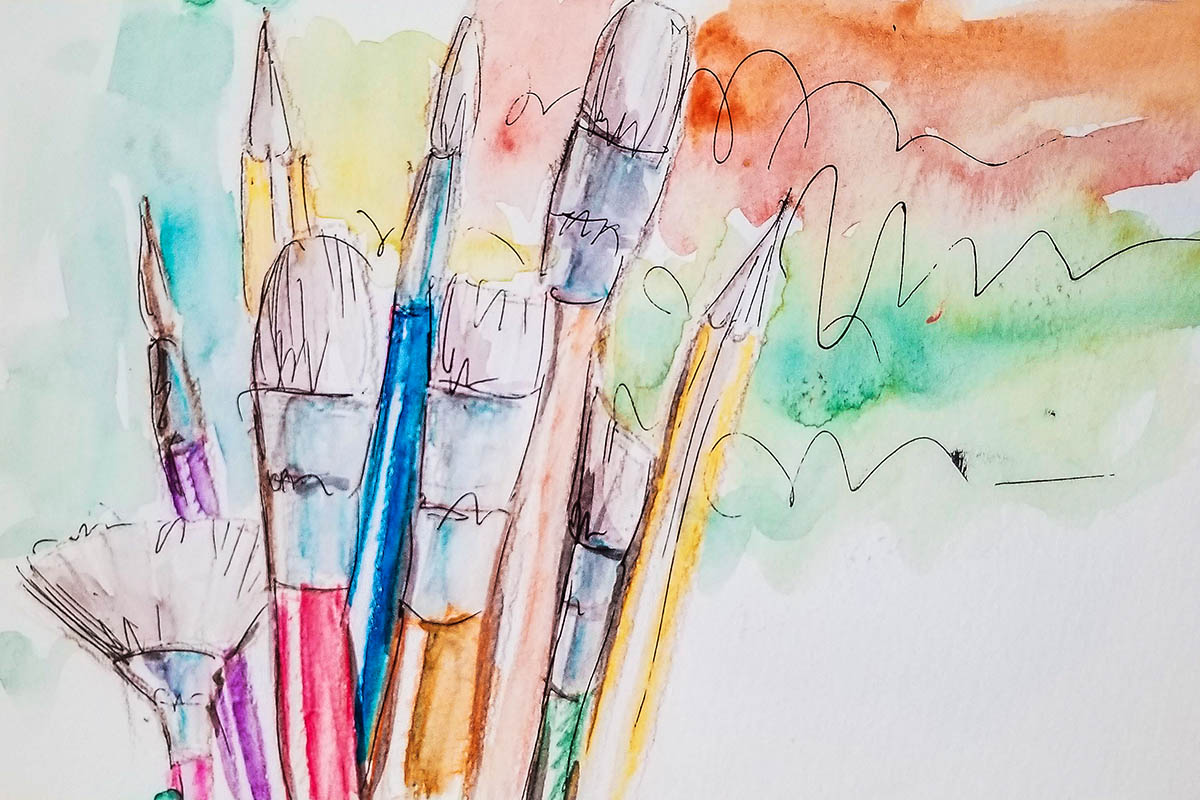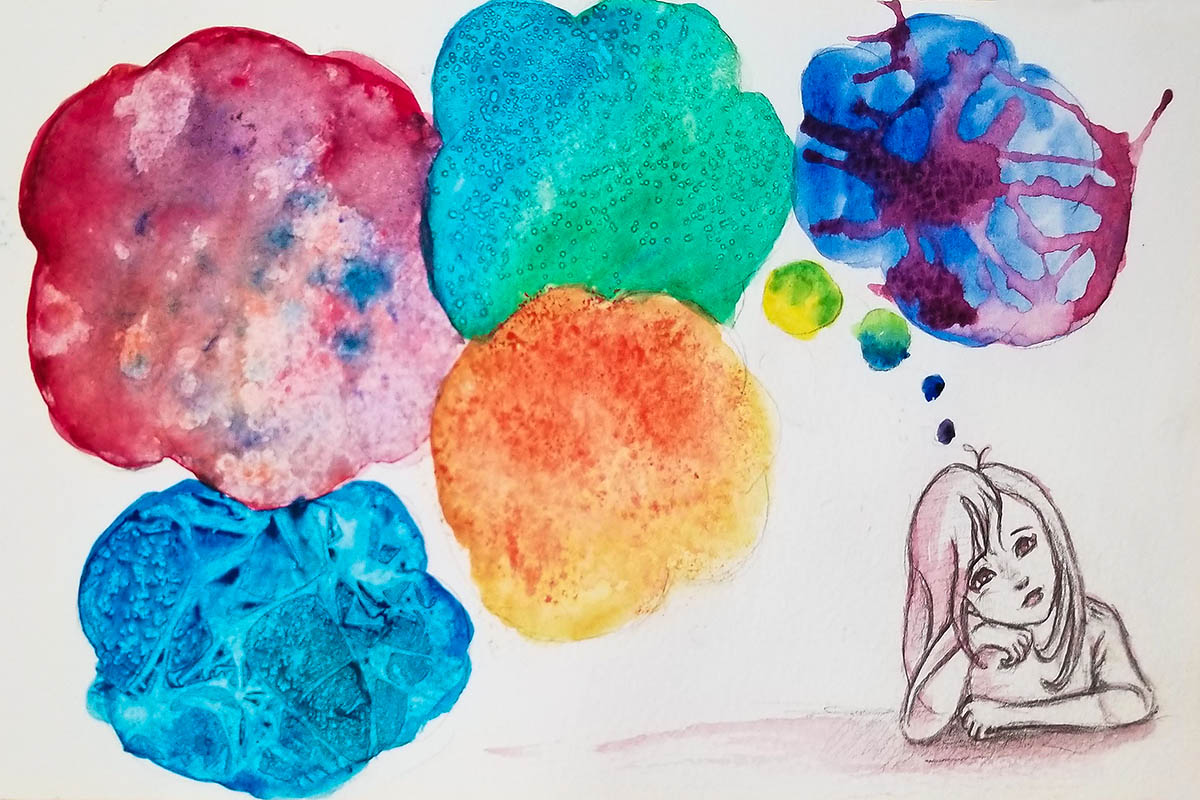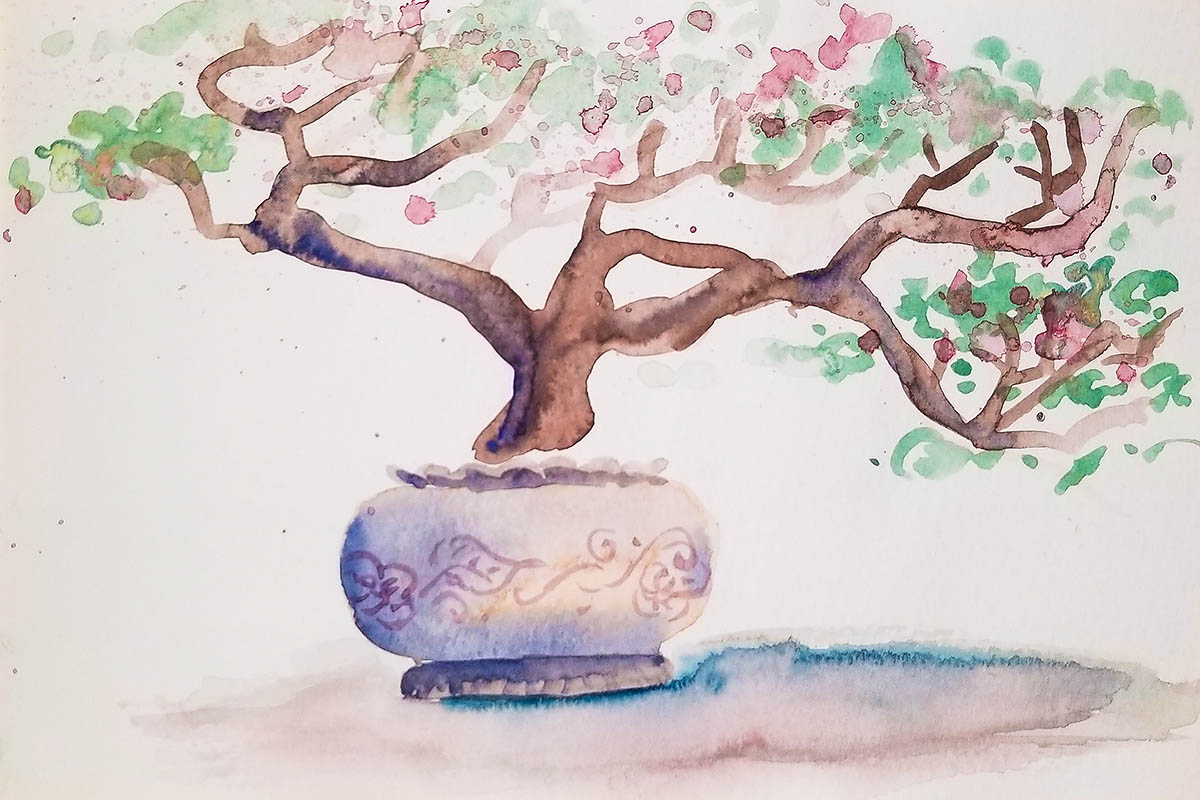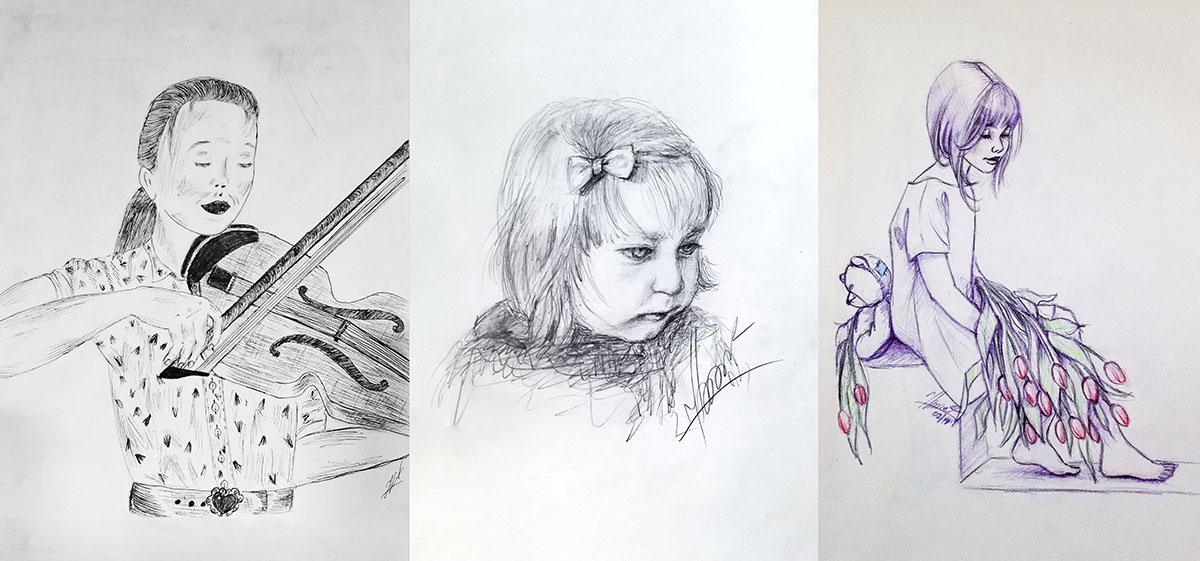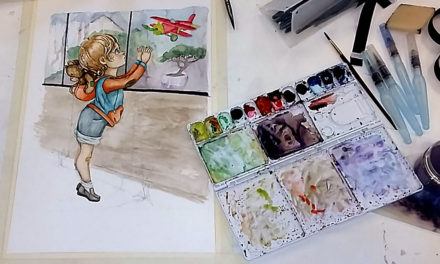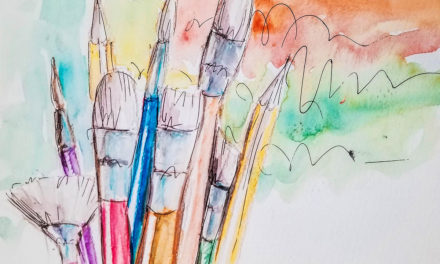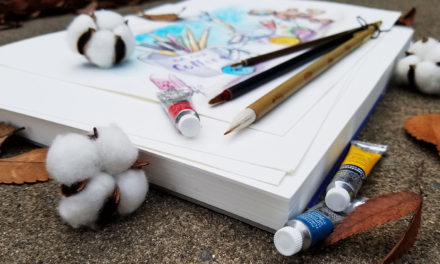Are you wondering how to become a painting artist, but with so many art styles don’t know where to start? The info and suggestions that I will share here, will give you more confidence that you are making the right decision.
If you are feeling like you would like to express yourself through art but have no idea what it takes to be a painting artist – you’ve come to the right place. I’ve been in your shoes as well, and have drawn out a simple guideline based on my personal experience.
I will advise you on how to find yourself in this vast world of art styles, and guide you on learning to express yourself through the most amazing masterpieces. To start on that journey, all you have to do is take a few simple steps:
First, understand what Art is. Find the art style that matches your personality, or you relate to the most. Find out what art medium you are most attracted to. And lastly, determine your subject matter that you would love to create.
WHAT IS VISUAL ART?
Many people consider Art as another version of photocopying. They expect their artwork to look exactly like a photo, or a real-life subject, in that regard.
While a photo-realistic likeliness of the subject matter in art is achievable, art is an interpretation of everything through your eyes, emotions, and how you perceive the surrounding world.
This post may include affiliate links. Please read our disclosure policy. [art001]
DON’T TRY TO COPY SOMEONE ELSE‘S ART STYLE
Do you have a favorite painting artist in mind? Have you ever looked at their masterpieces, drew inspiration from them, and got aspired to draw, paint or sculpt just like them one day? Well, so have I.
But here’s a thing, every single person on earth is unique. Each person experiences things differently and expresses them differently.
Just like every person has unique handwriting and fingerprints, their art style will be unique as well, no matter how hard they try to resemble their favorite artist. That is actually a good thing.
It is great to be inspired by someone’s amazing masterpieces. However, the most frustrating obstacle on our journey can be that we try too hard to be just like them. We will often fail, which can be quite discouraging.
Do not try to copy others’ art styles. Create your own, based on the inspiration of those amazing Artists. And it is not hard to do. Your unique signature will start showing itself naturally, as you continue to practice your art.
Often, the reason you are having such a hard time mastering the style of your favorite painting artist is because your unique signature is trying to break through, thus preventing you from doing so. And this could get quite frustrating.
So, do not suppress it by trying to master someone else’s style. Let your own shine.
WHAT TYPE OF ART STYLE INTERESTS YOU THE MOST?
Now that we’ve got “what ART is” cleared up, let’s begin.
First and foremost, you need to discover what type of art styles you find yourself connecting with the most.
The art field is very diverse. It literally has no beginning or end, and it’s easy to get lost and overwhelmed by its magnitude.
Start by pinpointing which type of art styles draw in your interest. Here is a list of few that I know of, to help you get started:
CLASSIC/FINE ART STYLES
Classic or Fine Art focuses on aesthetics and beauty. It was widely popular in western European culture, such as the Italian Renaissance.
Some of the famous artists that inspired the classic or fine art styles are Michelangelo and Leonardo da Vinci.
IMPRESSIONISM
Impressionism is an art style that originates from France and focuses on capturing a feeling or experience rather than achieving accurate depiction.
Artists such as Vincent van Gogh, Georges Seurat, and Paul Cézanne inspired the post-impressionism style movement.
ROMANTICISM
The romanticism art styles are characterized by a heightened interest in nature. It emphasizes the individual’s expression of emotion and imagination. It originated in Europe in the late 1700s as a departure from classicism.
An excellent example of a few artists who used romanticism is John Constable, John Sell Cotman, and John Robert Cozen.
REALISM/NATURALISM
Realism is also known as the naturalism art style. This style is generally the attempt to represent subject matter truthfully. It strives to avoid distortions and imaginative and supernatural elements.
Artists such as Jean-François Millet and Gustave Courbet expressed realism or naturalism perfectly through some of their masterpieces.
ABSTRACT
The abstract is basically a distortion of naturalism. It’s the art style that does not strive to represent an accurate depiction of visual reality. It uses different shapes, forms, colors, and gestural marks to achieve its effect.
You can see how artists such as Pablo Picasso, Frida Kahlo, and Salvador Dali used Abstract very effectively.
CONTEMPORARY ART STYLES
Contemporary is a modern art style of the 21st century. The contemporary art style is a creative combination of different media and materials, methods, concepts, and subjects to create dynamic and unique masterpieces that challenge traditional boundaries.
Artists such as Jeff Koons, Takashi Murakami, Frank Stella, and Anselm Kiefer have mastered the contemporary art styles.
ILLUSTRATION
Illustration, for the most part, is a type of art that visually represents a written text or comic interpretation of life. This art style draws its origin way back from the cave paintings when people would record events in illustrative form.
Today illustration is predominantly used to create graphic novels and children’s books all around the world.
My all times favorite artist that interpreted everyday life through illustrative art style is Norman Rockwell.
CHOOSING SUBJECT MATTER
Once you have found your attraction to one or a few particular art styles, you now have to choose which subject matter you find yourself most comfortable working with. For example:
PORTRAITS/PEOPLE
Painting/Drawing portraits of people or full figures, as well as illustrating graphic novels, or creating animated characters.
LANDSCAPE/NATURE
Choosing to paint beautiful, wide landscapes, suburbs, or cities. Wildlife, flowers, and living vegetation all fall under this category as well.
STILL LIFE
In still life, the focus falls on a specific composition of various objects, both conventional and unconventional. Objects are found all around and put together by an artist to create unique and interesting artwork.
ABSTRACT
Abstract style is using any of the above and distorting it, however you desire. It gives your artwork a new and imaginative life with an edge that’s outside traditional boundaries.
Sure, you may feel inspired to work with all of the methods mentioned above, and that’s wonderful, many artists do. But if you are like me, you may find yourself more comfortable working with one or two subjects.
If you prefer still life, people, or portraits and you find other subject matters challenging, then do not push yourself.
Focus on the one you feel most comfortable with until you master it. Then as you gain more skills and experience in art, slowly branch out to other subject matters, media, and art styles.
Remember, art has no boundaries and is a language of self-expression. The important part is not to get yourself overwhelmed with too many things at once. Keep it simple by mastering one thing at a time, and remember, practice makes it perfect.
CHOOSING YOUR MEDIUM
You have found the art styles that you like and have chosen a subject matter in which you are most confident. Now you need to select a medium that you would like to use to express your art through.
There are countless ways you can express your artwork, but I am going to list a few examples of the most popular media that I’m familiar with.
OIL PAINTING
Oils are one of the oldest and most preferred media in western European culture. This media consists of color pigmentation suspended in drying oils and is thick and smooth.
The oil paint drying process is very slow. However, it allows you a lot of freedom to work on color mixing, flawless blending, fine detailing, desired translucency, and build up opaqueness.
Oil paints also allow you to achieve a wide variety of painting techniques. They can be smooth and flawless blending, or heavy brush strokes, or almost three-dimensional pallet knife texture.
Although many artists experiment with combining oil paints with other materials, oil paints are usually used to paint on canvases. They require coarse, stiff brushes and pallet knives. At times, they require chemical solutions such as Liquin to thin it for better fluidness.
These paints require a special brush cleanser because it is impossible to restore your brushes after oil use with just regular soap and water.
Oil paintings are one of the most popular art media for artists to sell their artwork. These paintings can come in large sizes that would make a wonderful addition to people’s home decor.
The wonderful thing about painting with oils, you have enough freedom to fix mistakes, repaint, or paint over your messed up pieces.
So, if you are not happy with the way your first painting had turned out, don’t worry. Just gesso it, and start over. You don’t have to throw away that fine canvas-stretched frame.
ACRYLIC PAINTING
Acrylic may seem to somewhat resemble oil paints at first sight, but it is very different. This is a synthetic paint that uses polymer emulsion as a suspension for its pigmentations.
It is water-soluble and water-based media. This means that it can be mixed with water, and also cleaned with water.
Acrylic is a very fast-drying paint, so you will need a thinner such as Liquitex, to prolong its moist life. This will give you more time for blending.
Acrylic paint is much thinner and runnier than oil paints, so it will not allow you much freedom to play around with textures, as oil paints do. But acrylic makes a perfect medium for contemporary and abstract art styles.
It’s compatible with most surfaces and materials. It allows you to create a dripping effect, as well as the most interesting gestural marks.
Acrylic paint may be a little stiff on smooth blending, but it’s excellent for fine detailing. And just like oil paints, you can work on the top of your dried up piece to either enhance it or paint over completely.
As I mentioned before, acrylic paint is compatible with a lot of different materials. You can use it on canvas, paper, wood, metal, and fabric. It requires much softer brushes than oil paints, yet much stiffer than watercolor paints.
Although acrylic paint is pretty diverse, I would not recommend mixing it with oil paints, as acrylic is water-based media, and oil paints are oil-based media. And as you know, water and oil don’t mix well together.
I also wouldn’t recommend using acrylic paint to paint over a dried-up oil painting, because eventually, it will peel off.
WATERCOLOR PAINTING
Just like the name states, watercolor paints are completely based on water and don’t require any other solution for mixing. Watercolors use gum arabica as a binder for its pigmentation. It then breaks down in the water, leaving the pigments adhering to the surface of your paper.
Watercolor paints are made to be used exclusively on special watercolor paper. It’s very thick and has cotton woven into it, to keep the paper from dissolving when it comes in contact with water. Read more about ways that will help you choose the right paper in our Watercolor Paper Guide.
The watercolor painting is one of the most complex media to master. When painting with watercolors, you have to be very patient and precise in your color application. It doesn’t allow you much room for error.
Watercolor painting works like staining the paper. The pigments, once placed onto the surface of your paper, immediately get absorbed by it, and can not be lifted off.
But regardless of being one of the most complicated media to work with, it is my most favorite media. Once it’s mastered, your paintings can be breathtaking. If you are just getting into watercolors, I suggest you read our Introduction to Watercolors article.
You cannot achieve that aesthetically pleasing, serene softness of washed watercolor effect through any other media or type of paint.
Watercolor paints require watercolor paper and soft brushes for use. It’s easily cleaned with water, and even if your paint dries on your brushes, it can simply be washed off.
GOUACHE
Gouache is also a water-based paint. It is very similar to watercolor but much heavier and dries much more opaquely than regular watercolors.
Gouache is highly versatile and can produce bright, luminous paintings as well as be watered down to create soft, transparent layers. It can also be built up for a textured effect similar to acrylic paint.
Gouache is not as popular among artists as oil or watercolor paints, and I haven’t used it much. Some painting artists still prefer gouache paints because of their versatility and easiness of use.
Much like watercolor, it is water-soluble and requires watercolor paper as a medium to soft brushes.
GRAPHITE ART STYLES
We all have seen incredible, monochromatic sketch-style detailed or smoothly blended works of art all achieved in plain, graphite pencil.
Drawing with a graphite pencil is not that simple. There are regular school graphite pencils for your everyday use, we know them as the HB. And then there are specific, art graphite pencils, that range in the different softness of the tip.
The hardest tip is 9H, and it gets softer as the number goes down. 8H, 7H, 6H, 5H, 4H, 3H, 2H are all on a hard side. Then we have a medium softness: H, F, HB, and B. Then, it gets very soft, 2B, 3B, 4B, 5B, 6B, 7B, 8B, and the 9B, is the softest graphite tip.
Graphite is almost on the same level as the charcoal pencils and can smear very easily. This could be great for deep shadows and blending.
Of course, you don’t need to possess every single pencil listed here. But even if it’s just two or three of them, you need to choose the ones you find most suitable for your art styles.
Just a little tip, in case you’re still not sure which graphite to pick. Hard tip graphites are good to use with watercolor painting since they apply very lightly and don’t smear around.
Medium and soft tip graphite pencils are great for shading and blending when working on your monochromatic sketch.
COLOR PENCILS
Almost every beginner painting artist I know started with the typical color pencils. When we think of color pencils, we automatically associate them with childish coloring pages and school projects.
Many aspiring artists don’t even view color pencils as a serious medium choice for artwork. But with a specific artist brand of color pencils, some of the most amazing works of art can be achieved.
There are many different types and brands of color pencils, such as Artist’s Choice, Prismacolor, and many others, that are ideal for professional painting artist work.
You can also look at watercolor pencils, which are a good alternative for watercolor painting. They are water-soluble and can be blended using brushes with a drop of water, to create unique works of art. This is a mix between watercolor painting and a color pencil drawing.
CHARCOAL
Charcoal is a dry art medium that’s made out of finely ground organic material bided by either wax, gum, or simply produced by eliminating the oxygen inside the material.
This medium is almost like very soft chalk that is very dense and fragile at the same time. It can be used on many different surfaces, from smooth to very coarse. Charcoal can produce very thick lines and soft shading.
Charcoal or charcoal pencils are great for quick sketching and make capturing the depth of the subject matter very easily. Many beginner art class teachers will recommend charcoal as your jumpstart medium in art.
Just have to be mindful of the dust, and its smudging and staining properties.
SOFT PASTELS
Soft pastels are a pure color pigmentation that’s used in every art medium, including oil paints. It is condensed and bonded by gum arabica.
They come either in the form of a stick or pencils called pastel pencils, in which the pastel material is encased in wood.
Much like charcoal, soft pastels are a dry medium and easy to use on both smooth and coarse paper surfaces. Soft pastels look best on off white, black or colored pastel paper. They apply easily and smear easily too, allowing for beautiful, flawless blending and soft shading.
Soft pastels were in use as early as the twentieth century and were preferred by many painting artists. Soft pastels are mostly pigment and little binder, which results in more vibrant colors. It also results in a higher portion of dust.
A painting that is done in soft pastels requires to be protected by incasing in glass or to be sprayed with a fixative. However, when using any type of fixative with soft pastels, you have to be very cautious. It may affect the vibrancy of your colors.
It is recommended when working with soft pastels, to work in layers, spraying fixative in between each layer to set the pigment in place. This also seals up your previous build-up of pigment, preventing it from flaking off, when in an attempt to add more color on the top of it, which is very natural for soft pastel, because they behave very similar to regular chalk.
OIL PASTELS
Oil pastels are a cross between soft pastels and a crayon. They are also made out of condensed pure pigments mixed with non-drying oil and wax and come in the form of a stick as well. They are also known as oil crayons.
Oil pastels apply smoothly to the surface but provide a harder edge. They are not as easily blended or smeared as soft pastels, but their colors are very brilliant, and they don’t flake off or produce dust.
Oil pastels can create paintings similar to soft pastels and oil paintings. Oil pastels are acid-free and can be applied on multiple surfaces, such as paper, fabric, wood, and canvas.
Because they are oil and wax-based, they will not harden over time. They will remain flexible and won’t crack or flake off, no matter the temperature of the environment.
Unlike regular crayons or soft pastels, oil pastels will remain vibrant even years after application. But also unlike soft pastels, oil pastels cannot be sealed or sprayed with fixative, because of its oil and wax properties, which will repel almost anything.
Therefore it may make the build-up of the color a bit challenging. While corrections to the oil pastel paintings are possible, multiple revisions on the same area can result in a mess up and mixing of the colors.
SCULPTING ART STYLE
Sculpting is a form of art that’s expressed in dimensions by carving, shaping, or casting techniques. The sculpting field is just as diverse as a two-dimensional art form. It offers an abundant choice of media to work with: such as ceramic, polymer or air-dry clays, molding cast, wood, metal, wire, fabric, paper mache, apoxie sculpt and many more.
Sculpting expresses the nature of subject matter through the still, three-dimensional representation of literal and metaphoric interpretation in both realistic likeness and abstract forms.
MIXED MEDIA ART STYLES
Mixed media is a visual art form that combines a variety of media in a single artwork, both two-dimensional and three-dimensional.
Creating a work of art in which you combine several different media such as color pencils, watercolor, pastels, and acrylic, would be considered mixed media.
Mixed media is a popular form of artistic expression in the two-dimensional field, such as working with flat surfaces, as well as a three-dimensional field, such as sculpting.
The mixed media art style is such a diverse form of art that it has no limits. It is mostly experimental and is a lot of fun. It allows you limitless freedom to explore your creativity without holding back.
Most of the mixed media art methods are used by modern artists that create abstract and contemporary works of art.
DIGITAL ART
Digital art is a method of art that uses digital technology to practice the creative process. It is also known as the new media dating as early as the 1960s.
It consists of 2D visual imagery, effects, and illustrations created with the help of electronic devices. Most commonly used today are computers and drawing pads and tablets.
Many different programs are created today to assist digital art and illustration, which are very popular among the modern generation.
The digital illustration makes it very convenient for creating graphic novels. It’s laying out the foundation for animations and character generation.
Digital art is a fun way to explore the art field without having to own bulky and messy art supplies.
Even though I tried to highlight the characteristics of different art styles and methods in the best way I could, I would still recommend doing a bit more research. Learn more about art from other sources as well, to give you a fuller apprehension of the world of art.
A small tip: art history subject is a very interesting way to learn about the birth of art, its development, and diverse cultural enrichment throughout the entire world, and how it affects us today.
CHOOSE THE RIGHT TOOLS AS PAINTING ARTIST
Now that you are somewhat familiarized with the art field, it is time to talk about the tools.
As you know, every master’s best friends are their loyal tools. But I also know that feeling of being very inspired. You step into an art store and are overwhelmed by an endless selection of bright, colorful art supplies. You feel as if each item is begging to be picked off the shelf and go home with you.
Shopping for your art supplies, especially for the first time, might be one of the most frustrating and head-spinning tasks. It can also make you feel like a little kid in a candy shop. You just want to try everything!
But you have to think about your budget because art supplies can get a bit pricey. Since you are just a beginner in art, I would recommend starting with simpler tools.
WHAT PAINTING ART TOOLS YOU WILL NEED
First and foremost, you will need a sketchbook and a couple of graphite pencils with a kneaded eraser and a sharpener.
Sketchbook is practically an artist’s diary in which they record their inspiration, ideas, and practice their skills.
If you are ready to start diving into your chosen media, I recommend getting a sample pack of few color sets and few brushes in various tip sizes if your medium requires it.
You must look into the right type of brushes, canvas, or paper to get for the right type of media.
For instance, oil paint requires stiff brushes and canvas frames, canvas boards, or canvas pads.
For acrylic paint, you can use paper and wood, but acrylic typically is a medium that is also used on canvas surfaces. While stiff and soft bristle brushes can be used with acrylic paints, medium stiffness is most recommended for acrylic painting.
For watercolor and gouache painting, you will need a watercolor paper and soft brushes.
Oil pastels can be applied to paper and canvas, and mostly blended by using fingers or other blending tools.
Pastels and charcoal are most effective on a specially tinted paper. It can be blended by the use of various tools and methods – from your fingertips to brushes.
If you are a beginner, I wouldn’t recommend spending your money on expensive, high-end brands. For the experimentation period of your art journey, start with more affordable supplies. Doing so will not put a strain on your budget while you explore your creativity.
Then as you get more confident and proficient in your artwork, you can start investing in higher quality art supplies.
LEARN ABOUT YOUR MEDIUM
I have pulled together bits and pieces to help you get a bit acquainted with art. This is only a very small portion of this amazing world.
Take your time to learn about the medium you are most interested in, its origin and history behind it.
Each art style, technique, and medium is unique and interesting and has an extraordinary beginning that can be very inspiring.
Take your time to learn about other artists and their backgrounds. This will help you realize that every greatness has a humble beginning. And that the secret of real success lies behind the integrity and strive despite failures and difficulties.
Learning about art and its history opens up a gateway to a whole new dimension. It will make you see the world in a whole new light.
Knowledge about art instills inspiration and invites confidence. It proves how all of us, no matter where from, are connected.
By learning about art, you will learn more about yourself and your potential. And it might help you find yourself in art and incite your own unique style.
START WITH SIMPLE THINGS
The most frustrating thing we can encounter at the beginning of our journey is that we imagine ourselves creating a masterpiece the moment we pick up that brush. That excitement and inspiration can be shattered to pieces as soon as we lay down our first strokes.
Do not get discouraged. No one became Picasso from the first try.
I’ll tell you a little secret: the magic to creating beautiful artwork isn’t in a paintbrush. It’s within you. You just have to muster it up by starting with simple things and keep on practicing until you get there.
Before you try to create a Mona Lisa painting, first learn how to properly use the medium that you chose. Learn its color scheme, its boundaries, and everything it has to offer.
Then start out with simple shapes and learn to capture proportions, lighting, and shading. Then as you feel you have mastered the basics, slowly move on to more complicated things.
Take it slow, do not rush. Art isn’t something that can be rushed. Remember, some of the most amazing masterpieces of famous artists took years to create.
DO NOT GIVE UP
Practice makes it perfect. Do not give up, but keep pushing yourself. Keep experimenting, stay out of the comfort zones, and don’t be afraid to challenge yourself.
I know that we tend to feel very discouraged when we step back, take a look at our work, and feel that it looks bad in comparison to our role-model. That alone can make us want to give up.
When you find yourself in that position, take a look at your work from a different perspective. It may not be as good as someone else’s work, but it is definitely much better than the work you did when you started out.
You have come this far, which means you have a much shorter distance left between now and your destination. So keep on practicing. Remember, if you do that, you can only get better from this point on.
If you encounter parts or areas that are especially challenging to draw or sculpt, for example, hands or faces – those are the things you absolutely should not avoid. In fact, it is something you must focus on more. The more you polish your art style, the stronger your signature style will be. People will look for ways to hire you to do a personalized painting or a drawing, which is one of the ways artists make money.
You will never master something by avoiding it just because it is difficult.
CONCLUSION
If you still find yourself at a loss of where to start, I highly recommend experimenting with different styles, media, and subject matters, to help you find the right one for you.
Make a great fun of it. Don’t worry about getting it done perfectly, or amazingly. Exploring your creativity can be very therapeutic and beneficial fo your well being.

